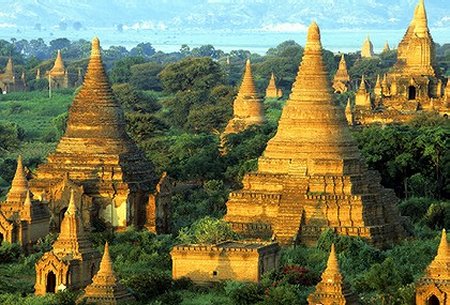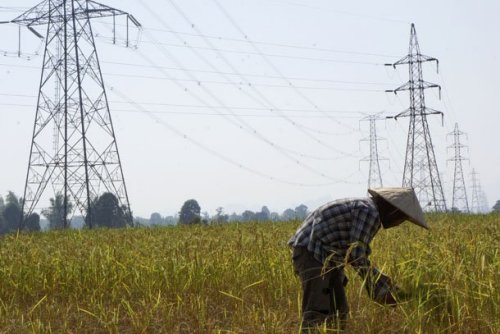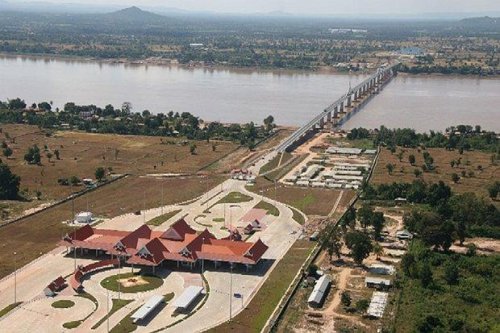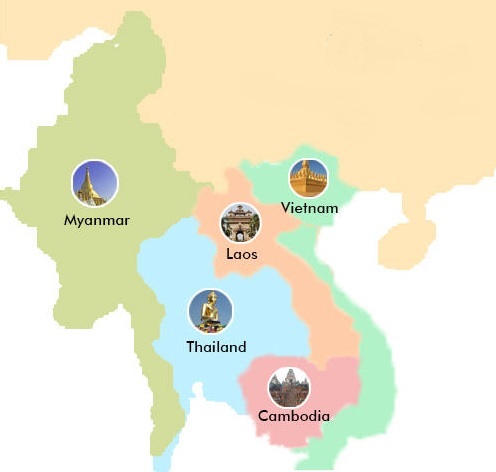Concerns in Laos That Burma’s Opening Could Slow Tourism Growth
Businesses in Laos, itself a nascent tourist draw, are concerned that growth in the sector could be stalled by Burma’s recent opening-up, which could see some visitors opting for one country over the other when planning holidays.
More than 3.3 million tourists visited Laos last year, a 22 percent increase on 2011, with the influx contributing US$513.5 million to Laos’ modest $19 billion economy.
To compare, in 2012 just over one million people visited Burma—a much bigger country with an estimated 50-60 million population, compared with Laos’ 6.5 million. But Burma is aiming for almost 2 million visitors over the course of 2013, with hopes that numbers will increase to 3 million by 2015 and to over 7 million by 2020.
Oudet Souvannavong, vice president of the Lao National Chamber of Commerce and Industry, told The Irrawaddy that “We are a bit affected, as people are starting to go to Myanmar rather than Laos.”
Pulling in more Western tourists, who according to Laos government statistics stay longer and spend more than visitors from neighboring countries, is key to the country’s tourism plans going forward. Around 2.8 million visitors to Laos in 2012 came from Asia and stayed on average one to three nights.
And of the total, one million Thais visited Laos and stayed just one night in the country, with an average daily expenditure of $20 per person, generating a total $21 million in revenue.
Steven Schipani, social sector specialist at the Asian Development Bank’s Thailand Mission, said Laos could learn from neighbors such as Vietnam and Thailand, and figure out how “to get more people to stay longer when they visit and to spend more.”
In 2012, 470,000 visitors to Laos came from outside the region and spent $275.1 million, prompting hopes that longer-haul visitor numbers could increase.
But since Burma’s reforms started in 2011, visitor numbers to Laos from the West have not been as high as hoped-for, Souvannavong said. “It has been at the reduction of tourism from Europe and America,” he lamented, referring to the impact of Burma’s opening-up.
Burma’s Tourism Minister Htay Aung believes, however, that both countries can grow their tourism sectors in tandem, rather than compete.
“We can attract tourists, they can attract tourists,” he told The Irrawaddy. “We don’t wish to compete with Laos, which is a neighbor in the region.”
The two countries share a 235-km border with a new frontier bridge crossing the Mekong River near Tachileik in Burma’s Shan State. The bridge is due to open for business in 2015.
Htay Aung told The Irrawaddy that the bridge, once ready, would facilitate people crossing over and back between the two countries, and would reduce the need for long-haul visitors who land in perennially popular Thailand to then have to choose between Burma or Laos as a next destination.
“When the Friendship Bridge is completed, it will allow people to cross easily,” he said.
As well as the short frontier, the Southeast Asian neighbors share some other features in common. Both countries are majority-Buddhist, with the temple architecture to match. And as Burma has Bagan, a plain dotted with several thousand old Buddhist temples, Laos has Xieng Khouang, site of the Plain of Jars, a mass Iron Age burial site.
Much of the Plain of Jars is off-limits, however, due to US bombing runs over Laos during the Indochina Wars of the 1960s and 70s, while some of Burma’s attractions—the scenic mountains of Kachin State in the country’s north, for example, are difficult to access due to ongoing conflict between the national army and ethnic Kachin fighters.
And despite high recent growth on the back of mining and hydropower exports, Laos’ infrastructure is decrepit, particularly in rural areas—similar to Burma on both counts.
Laos roads are arguably worse than those in Burma, with journey times made longer by the country’s mountainous terrain. Luang Prabang, the old capital, is a scenic Unesco world heritage site on the Mekong River that sits a 10-hour drive north of Vientiane, the sedate modern day capital.
In its favor, Laos has better mobile phone coverage, with four network providers and with the World Bank listing 103 out of 100 Laos people as having cellphone access, compared with 11 out of 100 in Burma, where the arrival of foreign network providers should see improved services by late 2014.
Electricity supply in Laos covers 75 percent of the country, compared with less than 30 percent in Burma, while hotel rooms are generally less expensive in Laos, compared to a Burma where the already-high prices are jacked-up during the tourism high season.
“Laos is still less expensive and I think, I hope, better value than Myanmar,” said Souvannavong.
In Burma’s favor, however, the tourism minister contends, are its long coastline and beaches, something landlocked Laos lacks, as well as having snow-capped mountains in the north.
“This combination is something unique in the region,” Htay Aung said.
Burma is arguably a better-known country internationally, with recent high profile reforms generating significant business interest and giving the former military-ruled country a niche status as the new go-to destination on the Southeast Asia trail.
Nobel laureate Aung San Suu Kyi remains a recognizable figure whose speeches and travel keeps Burma in the news, with Laos not having any internationally known personality to match the profile of Burma’s lauded opposition leader, who support a tourism boycott during Burma’s military rule era.
Laos, a smaller and relatively obscure one-party state, rarely features in Western media coverage, save for abuses such as the disappearance in December 2012 of activist Sombath Somphone. He has not been heard from since being detained by police, prompting some complaints by Western governments that the Laos government has not done much to try finding the missing man.
However, the undemocratic and arbitrary government system in Laos has not prompted anything near the international ire that Burma’s decades of army rule prompted in the past, and there seems little chance of Laos undertaking reforms akin to Burma’s post-2011 changes.
Tourism to Burma and Laos could be affected in the longer term by political protests in Bangkok, the main international air gateway to mainland Southeast Asia.
With an election due in February 2014, unrest in Bangkok—though mainly confined to areas close to Thai government buildings—could continue or perhaps spread, cutting into tourist numbers landing at Suvarnabhumi Airport.
“That could have a knock-on impact on Myanmar and Laos,” Schipani told The Irrawaddy.
Source: The Irrawaddy




